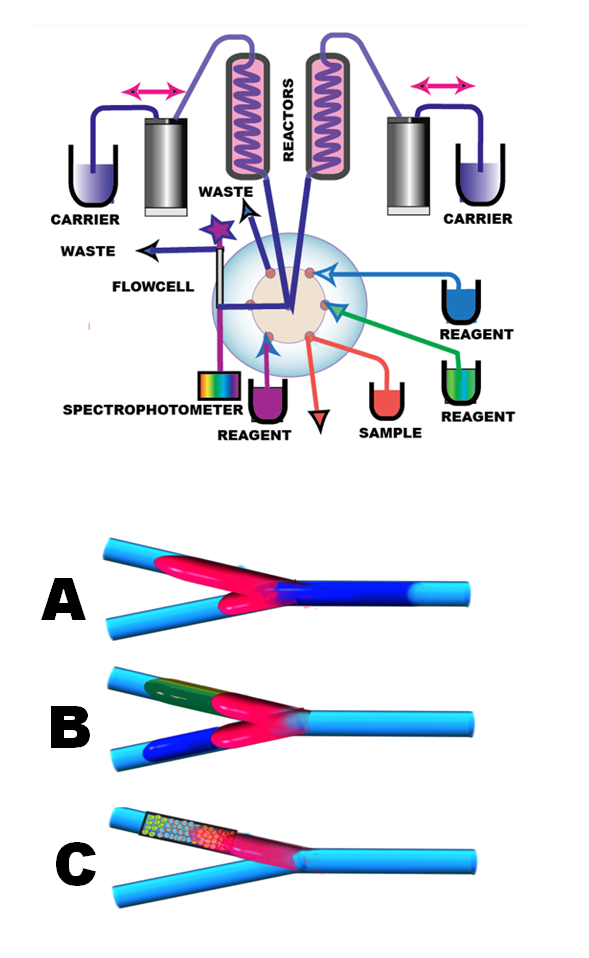Addition of a second pump to miniSIA instrument facilitates assay protocols based on:
- splitting of sample zone (A,B)
- use a column to separate analyte from an interfering matrix (C)
- on gas diffusion
- use of more than two reagents
Sample splitting allows simultaneous assay of two analytes. such as phosphate and silicate (2.2.33.B.) and nitrite and nitrate (2.2.22.). Uneven splitting of sample zone allows extension of a calibration range (2.2.30.).
Trace analysis (C) based on enrichment of target analyte on a microcolumn requires that a large volume of sample is pre conditioned by adjusting pH , and/or by adding a reagent. This has to be done in a confluence of two streams to ensure even conditions along the entire sample zone length. (M.Grand, P. Chocholous et.al 2015).
Gas diffusion based assays must be designed as a two pump system because, acceptor and donor (sample) stream must be strictly separated, since any cross contamination of acceptor stream by donor stream will cause a false reading. Such cross contamination will inevitably happen within the multiposition valve, if the system is designed with only one pump. Also, he use of two pumps allows flexibility in the choice of flow rates and duration of stopped flow period during which gas diffusion takes place.
Two Line SIA Systems
2.3.19.

Grand M.M, Chocholous P. et.al. Determination of Traces of Zn in Sea Water by Coupling SPE and Fluorescence Detection in LOV Format Anal. Chim. Acta 923, (2016) 45.









